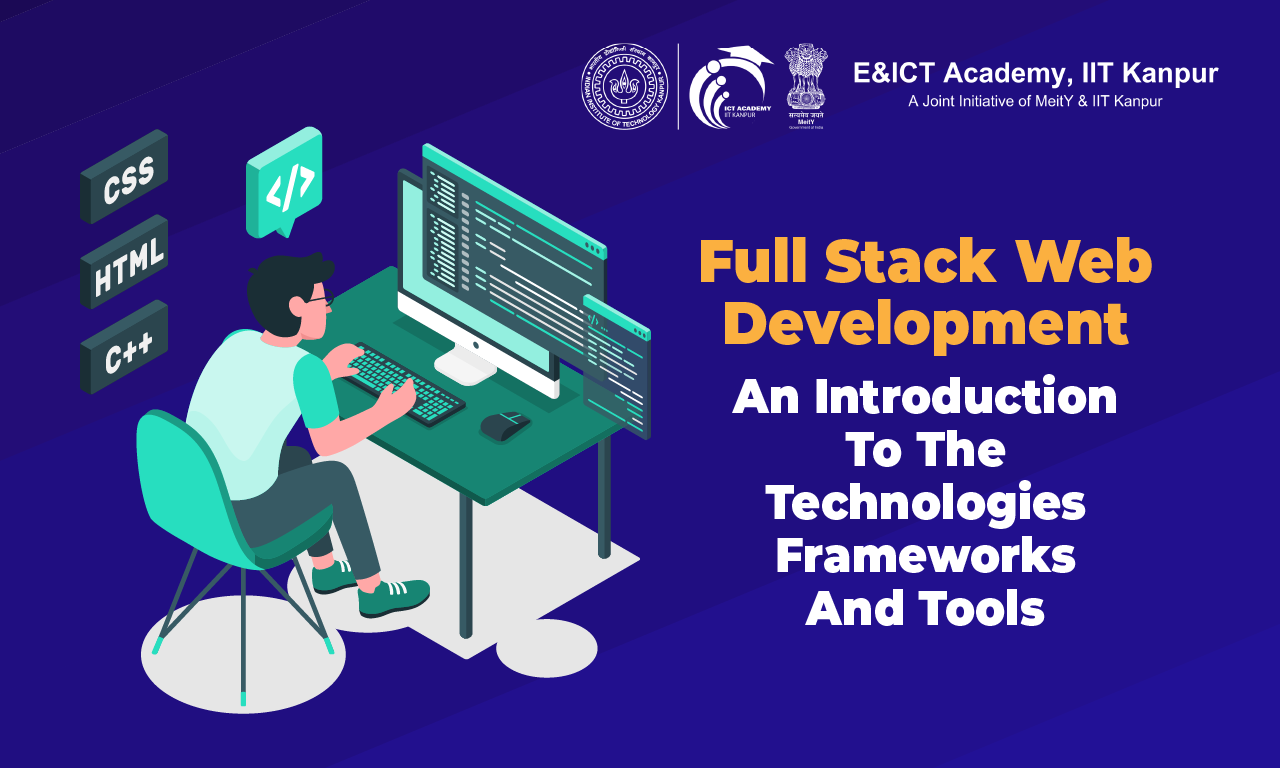Full-Stack Web Development: An Introduction to the Technologies, Frameworks, and Tools

Multiple businesses and corporations have shifted their operations online since the advancement of the technological era. This has brought about a constant increase in web usage and the release of newer such web-based applications every day. It has been estimated that the web design market in the US alone amounts to $40.8 billion.
Such web-based applications are produced by experts with the help of full-stack web development technology. This involves multiple processes, from the design to the distribution of the tested product.
Since full-stack web development involves both front-end and back-end software, the developers consider user experience and application functionality together. This dual approach helps create applications that are robust and manageable.
Therefore, when taking the full-stack web development approach, one must have complete knowledge of the technologies, frameworks, and tools involved both at the front and back end.
About Front-End Development
The portion of the web application accessible to clients for interaction and usage is known as the front end. Therefore, front-end web development is concerned with creating client-end software that can respond to the user’s queries and commands while presenting a comfortable interface.
Front-End Development Technologies
The front-end development of web applications for client usage is performed using HTML, CSS, and JavaScript.
HTML
The most commonly used markup language, HTML, can be considered the foundation layer of web pages and web-based applications. It helps add elements to the web page that create the basic structure.
Cascading Style Sheets
CSS is a styling language that helps give a web application the desired appearance by helping modify attributes such as colors, fonts, alignment, and spacing of different content.
JavaScript
The most popular programming language, JavaScript, helps add activity to web pages and applications by introducing functionality. This can be in the form of interactive elements, videos, and graphics.
Front-End Frameworks
Frameworks refer to ready-made elements that can be incorporated into the design to help reduce the coding time. Such frameworks assist in the easy creation and management of complex web application interfaces.
Some examples of front-end frameworks are:
Angular JS
It is an open-source framework that was launched by Google. Angular JS is chiefly used for single-page web applications based on JavaScript. It helps add a dynamic view to HTML codes. The continuous evolvement of Angular JS makes it useful in larger projects that require multiple features.
React.js
An open-source javascript library, React.js, is maintained by Meta. It helps in building interactive user interfaces with less code. For example, you can create web and mobile applications with one code using React Native.
Vue.js
Vue.js is recommended for beginners who want to develop single-page applications. This javascript framework for front-end application development is lightweight; therefore, it also helps reduce the load time of web pages and applications.
Front-End Interface Design Tools
The success of any web application is highly dependent on its user interface. Therefore, it is essential to create a user interface that is responsive, interactive, and useful. You can take the help of the following tools for the same:
Bootstrap
Most popularly used for creating mobile-based applications, Bootstrap has a collection of tools that help cut down code for creating an interactive web application.
JQuery
An open-source library, JQuery has a collection of user interfaces, including widgets, themes, and effects. Moreover, it helps simplify the document object model or DOM elements. Additionally, with JQuery’s library, you can substitute a long code for one function with a single line, cutting down the coding time.
Adobe XD
It is a desktop program that helps create samples of web applications and design user interfaces for the same. It also allows the developer to envision the user interface to make tweaks and changes as required. In addition, it contains multiple tools that assist in creating a dynamic interface.
About Back-End Development
The back-end development of web applications is concerned with the server-side software responsible for the smooth working of the web application. A developer can manage the website database and function with the help of back-end development.
Technologies Used In Back-End
The most commonly used languages in back-end development are as follows:
Python
It is a high-level programming language with a simple syntax that finds good use in back-end development. Moreover, it can be effortlessly integrated with other languages.
PHP
Short for Hypertext Preprocessor, PHP is a popular server-side scripting language with easy integration, flexibility, security, and cross-platform compatibility features. Moreover, there are multiple PHP-based open-source frameworks available that make the use of PHP much easier.
JavaScript
JavaScript is also highly useful in developing back-end software since it is an independent, structural platform that is lightweight and promotes object-oriented programming.
Back-end Frameworks
Frameworks are pre-made structured environments that aid developers in easy management and scalability of the back-end processes. The most widely used back-end frameworks are:
Django
Django is the most used Python-based framework for back-end development. It is an open-source library that offers model-template-views architectural patterns and has scalability, security, and extensibility features.
Laravel
It is a famous open-source PHP framework that is based on the model-view-controller pattern. Laravel provides various tools for back-end tasks such as unit testing, billing services, etc.
Tools Used in Back-End Development
A few tools that support the development and management of back-end software are:
Docker
Popular among back-end developers, Docker enables the creation and running of applications using containers that isolate and segregate resources for a smooth run. In addition, it provides scalability, flexibility, security, and rapid application deployment at a highly cost-effective rate.
MongoDB
MongoDB is an open-source database that supports multiple actions such as indexing, load balancing, aggregation, file storage, transactions, etc. It is also compatible with different languages, such as Python and PHP, increasing its versatility.
Postman
Postman is an application programming interface tool that assists in creating, testing, and modifying APIs. Moreover, it has useful features such as API-to-code conversion, progress saving, conversion to programming languages, and automated testing.
Conclusion
Full-stack web development encompasses multiple aspects of both front-end and back-end development and, therefore, uses several languages, tools, and databases to produce web applications successfully.
Multiple tools and frameworks are available that fulfill different needs arising in full-stack web development. Besides front-end and back-end tools, full-stack web developers also use deployment tools that help manage the smooth running of these applications.



